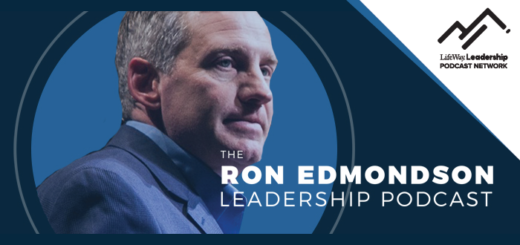7 Must Haves to Lead Genuine Organizational Change - Ron Edmondson
There are some key components if you wish to lead genuine organizational change.
In my observation, many leaders want change and know they need to lead it, but they haven’t been able to actually produce change.
I think there are reasons for this.
The process of change isn’t easy. It doesn’t happen overnight. Some leaders move too fast. Others move too slow. Plus, not every church, business or non-profit will tolerate change – or at least to the level prescribed by a leader. The leader needs to know when to push and when to leave things alone for a while.
It’s a delicate process leading change. The simple fact is, some leaders simply don’t know how to introduce healthy change.
I believe change is necessary for growth. I don’t think everything has to change. Some things never should. Change, even the hardest kind of change, has to occur if progress towards worthy visions is going to continue to occur.
This post is sort of a gut check for those who want to lead change – attempting to reconcile some of the criteria to be a good change agent leader.
Please understand, I’m not an expert but I have led lots of change – some successfully and some not so much. Plus, I’ve worked with dozens of leaders in leading change. I’ve learned there are some things we do which work better than others.
7 must haves to lead genuine change:
Think bigger than today.
Change is always going somewhere new. Always. So change leaders have to be able to think about the options which aren’t currently on the table. You’ve got to think beyond now and even beyond the most immediate future. You have to look for what others can’t see, choose not to or are afraid to see (or admit).
Work within a DNA conducive to change.
This one has more to do with the organization or people receiving the change than the leader implementing change. This doesn’t mean you don’t attempt to change the DNA, but realize every church and organization isn’t wired for change in the same way.
The fact is some of those said churches and organizations are going to die – they’ll stall – perhaps for long periods, but they’ll eventually just fade away. Nothing you can say or do will encourage otherwise. In the end, you can’t lead people where they don’t want to go.
The more you can tie the change to already established DNA the more success you will have changing.
Be willing to challenge status quo.
At the same time, change leaders have to go against the way things are being done and the way things have always been done. We are talking about change. Get it? Change. This means something is changing. (Oh, such a deep post.)
It may take longer some places than others, but to lead genuine change you have to move people from the center on which they’ve grounded themselves. This is never comfortable. Good change leaders are willing the challenge what has become standard or traditional in people’s minds.
Be able to withstand strong criticism.
Change invites pushback. Change changes things. (That’s deep, isn’t it?) Change is uncomfortable and people will tell you in certain ways the degree of discomfort they are feeling. Sometimes in passionate – even mean ways. If they don’t tell you they will passive aggressively tell others who will eventually tell you. You’ll feel unpopular at times. Rumors may spread about you.
Good change leaders always keep the vision before them and are motivated more towards the accomplishment of it more than making sure everyone is pleased with them personally.
Be able to outlast the opponents of change.
When the naysayers show up those wanting to lead genuine change are willing to stand strong for that which they believe is worth fighting. It will almost always take longer than you hoped it would.
At times you may even feel like quitting, but good change leaders stand the test of time – knowing the change is worth it. (Make sure you do.)
Constantly evaluate and are willing to adjust plans accordingly.
You can’t be a good change agent and equally be a control freak. You are leading people through sometimes muddy waters. You’ll need to solicit buy-in from others. You will need to collaborate. You’ll need to recalibrate as needed. Finally, you’ll have to delegate – and this means release the right to determine the exact way something is done.
Progress towards the goal must be more important than the exact actions taken towards achievement of them.
Have a willingness to fail.
Not all change will work. You can strategize and plan, but change at some level involves the risk it may not work. Good change leaders know this in advance and are willing to accept the challenge – and not defeated if it doesn’t.
Don’t allow your pride to get in the way. This change may not work, but you’ll have plenty of other opportunities to lead change. Plus, you may learn valuable lessons which will help you next time you attempt to change something.
Well, those are some hard realizations.
I’ve studied and observed them by working with dozens of churches, businesses and non-profits and in the organizations and churches in which I have led. Most of all, I’ve seen them true in my personal journey as a leader.
I should note, I believe we can grow as leaders in these characteristics. I’ve learned some places where others have said the process to lead genuine change couldn’t or wouldn’t occur haven’t always proven to be true. Sometimes the answer to making better changes is simply we must become better leaders.
Check out my leadership podcast where we discuss issues of leadership in a practical way. Plus, check out the other Lifeway Leadership Podcasts.











